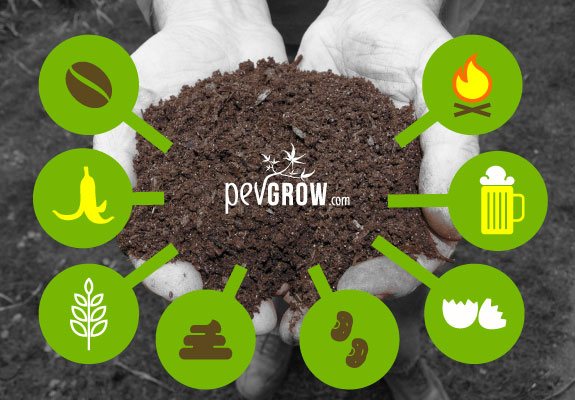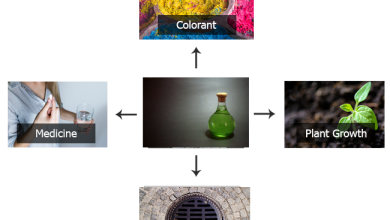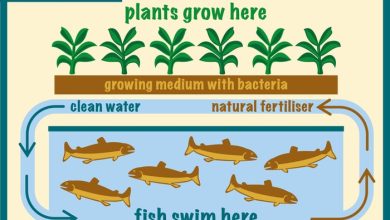Macronutrients, micronutrients and homemade fertilizers

For those of us who want to grow plants (horticultural and ornamental) in an ecological or organic way without using synthetic chemical products that in the medium and long term reduce the fertility of the soil, reduce the vigor of the plants and harm our health, there are homemade options very effective that are within our reach. In this case we are talking about natural fertilizers . Preparing our own organic fertilizers can be very simple and they bring great benefits to our orchards and gardens.
To begin, we are going to see what macro and micronutrients are and what basic elements we can use to make a homemade fertilizer to get good organic soil .
Organic fertilizers
The basic components of a good fertilizer are nitrogen (N), phosphorus (P) and potassium (K). All three are vital nutrients for our plants to grow strong, develop roots properly and produce quality fruits or flowers. They are called macronutrients.
Nitrogen stimulates leaf growth.
Phosphorus stimulates root growth.
Potassium stimulates the development of flowers and fruits.
Micronutrients
Just like we who need vitamins and minerals, plants also need micronutrients that stimulate and improve the development of plants and their fruits. In total we have about 13 additional chemical elements that contribute to this function that will improve productivity in our orchard or garden.
Therefore, in addition to macronutrients such as nitrogen, phosphorus and potassium, plants require Calcium (Ca), Magnesium (Mg), Sulfur (S). During photosynthesis, plants use sunlight to transform water and carbon dioxide into hydrogen (H), oxygen (O), and carbon (C), three non-mineral nutrients that plants turn into «food.» Boron (B), Copper (Cu), Iron (Fe), Chloride (Cl), Manganese (Mn), Molybdenum (Mo) and Zinc (Zn) are micronutrients necessary for plants and that they obtain from the earth through its roots.
Which microminerals you need to incorporate into the soil of your garden or garden will depend on the type of soil. To give you an idea and to apply this information in a practical way, keep in mind that soils that have a low pH tend to lack nitrogen, potassium, phosphorus, calcium, magnesium and sulfur. While if the pH is high, boron, copper, iron are generally lacking. chlorine, manganese, molybdenum and zinc. Neutral soils, with a pH between 6 and 6.5, normally contain adequate amounts of nutrients (both macro and micro).
Fertilization of tomato plants
Tomato or tomato plants are always present in urban gardens and cannot be absent from any garden. These plants love calcium. What’s more, they need more nitrogen in the early stages to avoid overdevelopment of the leaves that will limit flowering and fruit formation. In the next stages we will need to provide more phosphorus and potassium and very little nitrogen.
Tomato plants also love magnesium, in fact, tomatoes come out with a sweeter taste when we supplement with this micromineral.
Homemade fertilizers for the vegetable garden and garden
We can take advantage of and use household or garden waste to prepare fertilizers. In fact, there are some very common household scraps that we can use to fertilize.
The dregs of coffee can be reused. Mix them with the soil to add nitrogen to it. In addition, they do not modify the pH of the soil. Coffee grounds are very good for certain plants in particular, such as roses, azaleas, and hydrangeas.
The egg shells contain calcium by 96%. When used as fertilizer, they help to strengthen the cell structure of plants and also promote the transport of nutrients in plants.
Join other gardeners who are already enjoying their organic gardens with the help of our book «Urban gardens and flower beds» in which you will find a lot of useful information on urban organic gardening, get it now!
You can also take advantage of the water in the fish tanks . Especially if there are plants in the fish tank, this water will be rich in nitrogen and other nutrients that can improve the health of our orchard or garden. So the next time you change the water in the tank instead of throwing it away you can give it a second use.
The Epsom salts contain two important components to help plants are in optimum condition. These elements are magnesium, which plays a vital role during photosynthesis and is required by the plant to carry out enzymatic functions. In addition, the seeds also need magnesium to germinate. And Sulfur, which helps perform various functions, including amino acid production, root growth, and chlorophyll formation. In addition, the sulfur gives the plants of the cruciferous families (cabbages, broccoli) and liliaceae (garlic, onions) their characteristic flavor.
Use Epsom salts to fertilize onions, cabbages, and broccoli for stronger plants and better-tasting fruits. Use them on tomatoes, peppers, and roses for stronger plants with higher flowering. As a general fertilizer, Epsom salts are excellent and also a very easy to use home remedy. Mix a tablespoon of Epsom salts in 4 liters of water and apply by spraying it on the aerial part, like a foliar fertilizer. Apply once every two weeks. We can also sprinkle a teaspoon of salts directly around the seedlings that we have just transplanted from the seedbed to their final site. Repeat again when the plant takes its first flower and when it produces the first fruit. For plants in pots or containers, mix one teaspoon of Epsom salts in two liters of water and use as irrigation water.
For plants that like acidic soil (acidophilic) such as azaleas, cyclamen, strawberries or blueberries, we can use vinegar as a fertilizer to improve the bioavailability of nutrients. Simply mix 1 teaspoon for every two liters of water and use it as irrigation water every three months.
The compost tea can do it by filling a bucket with 2 kilos of compost done that will add 6 liters of water. Partially cover and move the contents from time to time during the day. After three or four days, strain the mixture. Put the solid part back in the compost pile or apply it directly to the soil in the garden or garden. With the resulting liquid, it must be diluted at the ratio of one part of compost tea to 10 of water. Apply this solution directly on the ground or you can also spray the foliar part of the plant.
SHARE THIS ARTICLE!

![Photo of [10 Types] of Indoor Plants that Need Low Light](https://www.complete-gardening.com/wp-content/uploads/2022/08/10-types-of-indoor-plants-that-need-low-light-390x220.jpg)
![Photo of Mulch Fly: [Detection, Steps to follow and Products to use]](https://www.complete-gardening.com/wp-content/uploads/2022/08/mulch-fly-detection-steps-to-follow-and-products-to-use-390x220.jpg)

